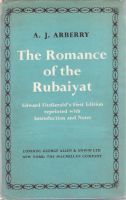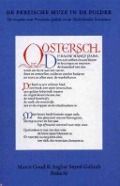Was Bedeutet Chäyyam? Warum hat Omar Chäjjam, der Verfasser der Berühmten persischen Vierzeiler, gerade diesen Dichternamen gewählt? Versuch einder Erklärung. Wilhelm Litten. Berlin und Leipzig, De Gruyter & Co., 1930. 25 p.
Contents:
Inhaltsangabe
Übersicht über die Art der Umschrift
Die wörtliche Bedeutung ist Zeltmacher
War der Dichter ein Zeltmacher?
War es sein Familienname?
Die Fachausdrücke der persischen Metrik
Sie waren zur Zeit des Dichters Allgemeingut der Gebildeten
Die bisher unbeachtete Bedeutung des Wortes
Diese Bedeutung beseitigt auch andere Widersprüche

